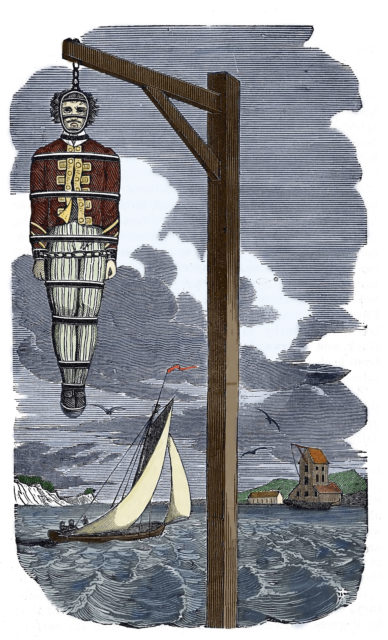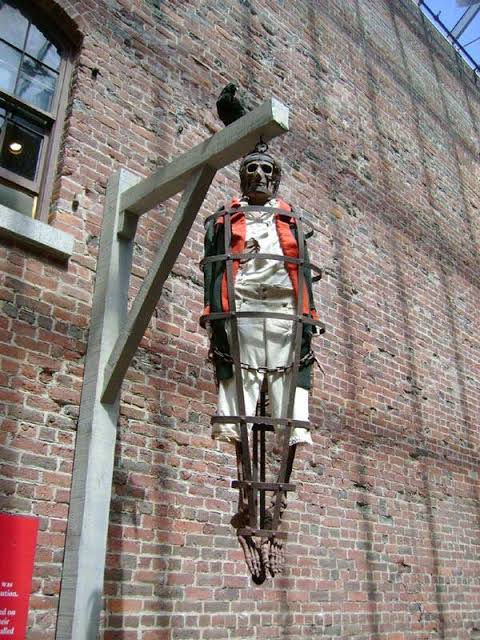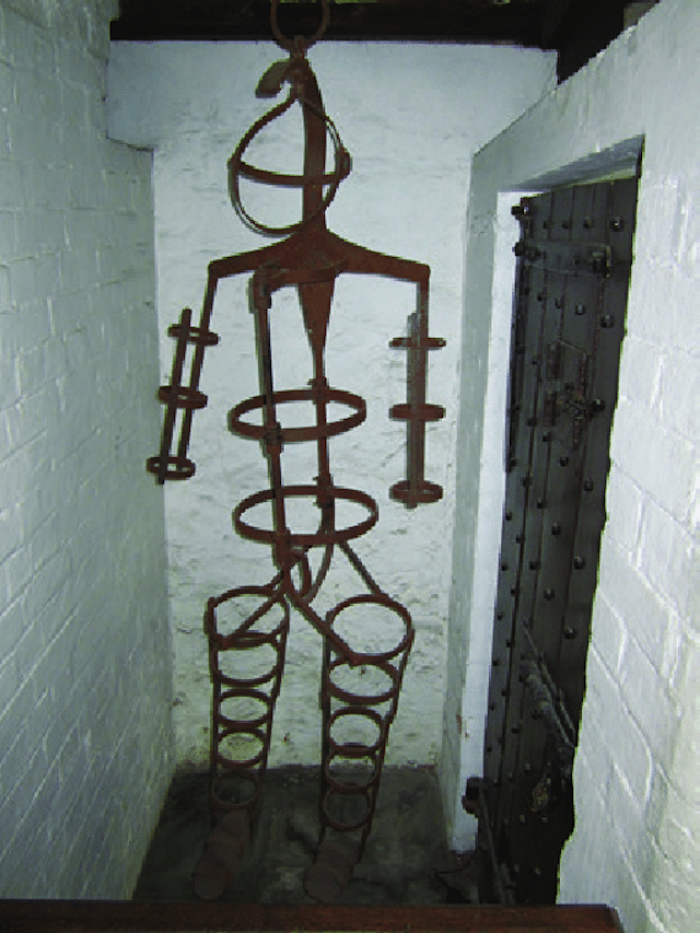Introduction
Hanging was a common method of capital punishment among the Anglo-Saxons and continued to be widely used across Europe for centuries. While other means of execution existed, none were as prevalent or enduring as death by hanging. Torture was often employed to extract confessions and information, and public executions served as a powerful deterrent against crime. Prisoners had no rights, and the use of torture and executions was widespread and unregulated.

The Gibbet: An Instrument of Public Execution
Definition and Purpose
A gibbet is a gallows-like structure used for public executions, where the bodies of criminals were displayed to deter others. Sometimes, the gibbet was also used as a method of execution, with the criminal left to die from exposure, thirst, or starvation. This practice, known as “hanging in chains,” involved displaying the corpse as the final part of an aggravated execution or post-mortem punishment for particularly heinous crimes.

Historical Examples
In Scotland, prior to the mid-18th century, gibbeting was used for heinous murders. Hugo Arnot cited the 1601 case of Thomas Armstrong, who was tried for the murder of Sir John Carmichael, as the first instance in Scotland of a malefactor being hung in chains. Lord MacLaurin highlighted the case of John Dow Macgregor, who was hung in chains in 1637 for theft, robbery, and slaughter. By the mid-18th century, prolonged pre-mortem suffering in executions was waning, but post-mortem punishments like gibbeting continued.

The Impact and Implications of Gibbeting
Public Display and Denial of Burial
Displaying a criminal’s body in chains had a significant impact, as it not only denied the corpse a proper burial but also placed it in public view to gradually decompose. This served as a stark reminder of the consequences of criminal behavior. If a criminal was to be hung in chains, the body would be cut down after hanging for 30-60 minutes and then rehung inside a gibbet cage.

Gallows vs. Gibbet
The terms gallows and gibbet are often used interchangeably, but they refer to different apparatuses. The gallows is used to hang criminals by the neck during execution, while the gibbet is a structure for exposing criminal corpses, consisting of an upright post with a projecting arm from which the cage would hang.
Construction and Cost of Gibbets
Individual Gibbets
Tarlow’s research into surviving details of gibbets used in England during this period shows that gibbet cages were made for individual offenders as needed. This was also the practice in Scotland, where bodies often remained on display for years, making reuse impractical.
Cost of Gibbeting
Gibbeting was potentially very expensive. For example, the execution and hanging in chains of Edward Miles in England in 1793 cost over £67. A detailed description of a Scottish gibbet used for Kenneth Leal in 1773 reveals its intricate construction: a ring around each ankle with chains passing up each leg, fastened to a strong iron hoop around the body, with four straps leading to a neck ring and head cap. The entire assembly was attached to a swivel-link, allowing it to rotate, and was suspended from a 2-foot chain. All metalwork was made of iron, creating a visually impressive and intimidating form of punishment.

Conclusion
Hanging and gibbeting were brutal methods of punishment that served not only to execute but also to humiliate and deter. The public display of criminals’ bodies in gibbets was a powerful tool in maintaining order and demonstrating the consequences of crime. Despite the high costs and the evolution of execution methods, the legacy of these medieval practices remains a stark reminder of the past’s harsh justice system.




